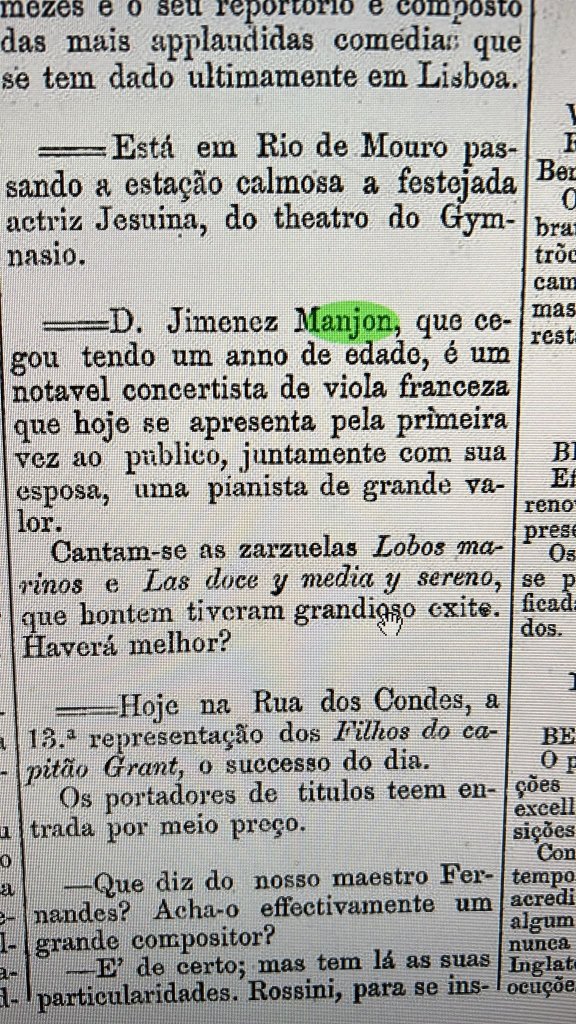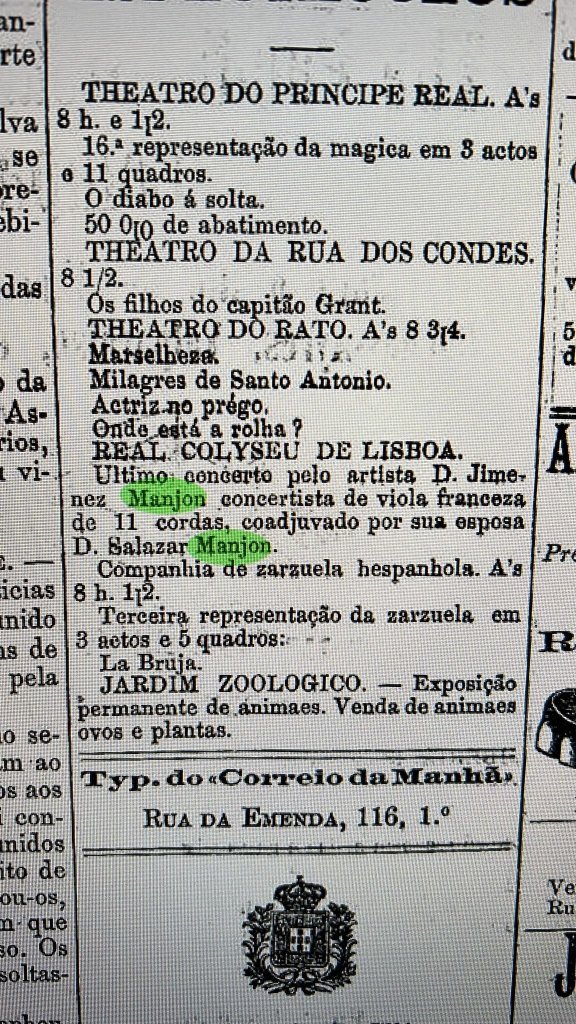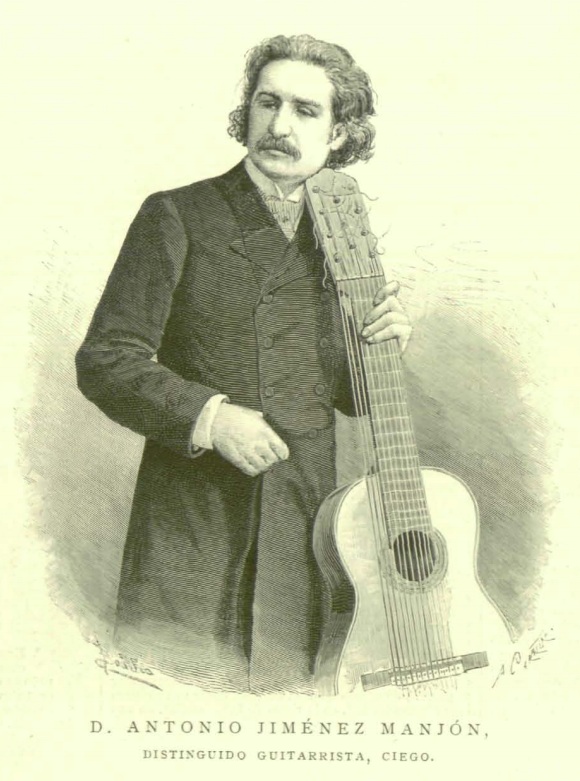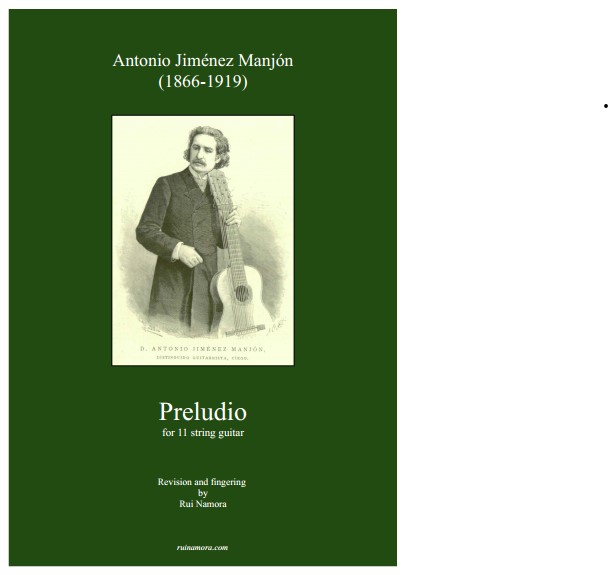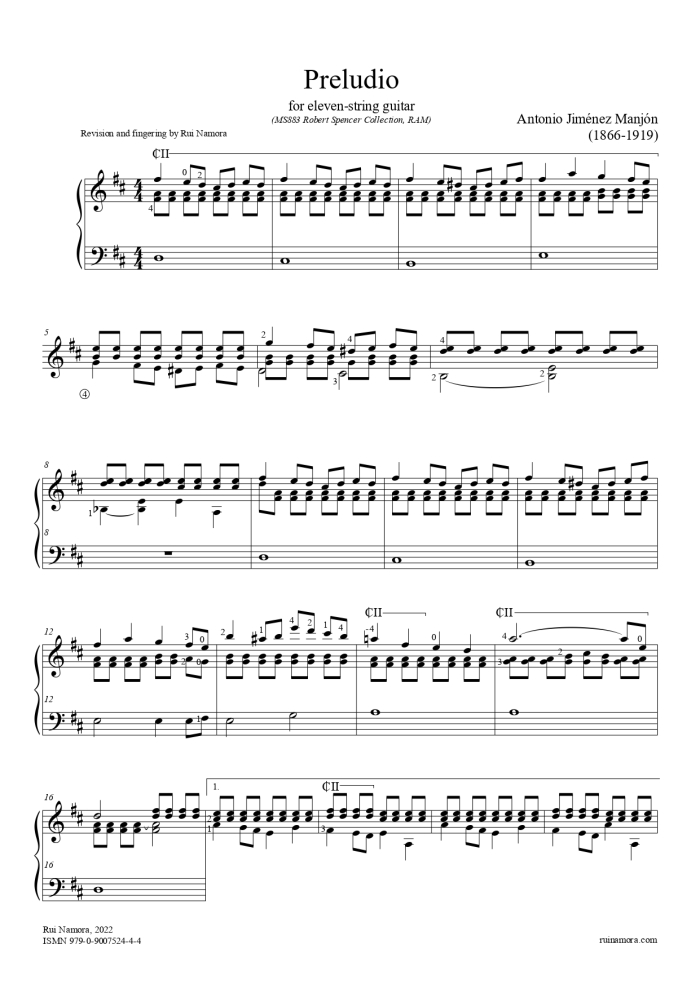Antonio Jiménez Manjón was a Spanish guitarist and composer born in 1866 in the Andalusian city of Villacarrillo, Jaén. Despite being blind from a very young age, he began his musical career at the age of twelve, performing recitals in Spain and Portugal. In Portugal, he played for King D. Fernando II, husband of Queen D. Maria II, who was known for his support of the Arts.
(* 24 years before, in 1854 , Fernando II, or Ferdinand von Sachsen-Coburg-Koháry had received another Spanish virtuoso, Trinidad Huerta, to whom he dedicated the Fantasie “Souvenir de Cintra”)
Afterward, young Antonio traveled alone with little money to Paris, where he studied the violin at the Conservatory while continuing his guitar career. He associated with musicians like Gounod, Saint-Saëns, and Sarasate. In 1887, Manjón returned to his native country, invited by the Spanish monarchs to perform in a concert at the Royal Palace. During those years, he traveled through Europe with his eleven-string Torres guitar. In 1890, he toured through Porto, Coimbra, and Lisbon, and his concerts with his wife, the skilled pianist Rafaela Salazar, were well-received and covered in Portuguese newspapers.
In 1893, Manjón crossed the Atlantic to the Americas and finally settled in Buenos Aires in 1902 after performing and teaching in several countries in South America. He returned to Europe one last time for a tour in 1912-13. In Argentina, he founded a conservatory and published his work “Escuela de Guitarra.”
Antonio Jiménez Manjón passed away in 1919 in Buenos Aires
His works were rediscovered in the 1990s, with the publication of some of his compositions in facsimile format (by Brian Jeffery, Tecla éditions) or unpublished manuscripts (Alan Rinehart, Chanterelle). One of his most interesting and well-known works, “Leyenda,” originally composed for the 11-string guitar but adapted for the 6-string guitar without compromising its essence, gained popularity with recordings by renowned guitarists like David Russell or Raphaela Smits.
Tiscornia Collection Catalogue
The source of the manuscripts is the collection of Robert Spencer at the Royal Academy of Music in London, which was acquired from the family of the Argentine collector Euleuterio F. Tiscornia (1879-1945), who was one of Manjón’s students.
The beautiful prelude, originally composed for the 11-string guitar (7+4 floating strings) that Manjón used, is relatively unknown today. I discovered it only a few years ago through a video recorded by the exceptional guitarist Radmila Besic (http://www.radmilabesic.com) in 2011. I got in touch with the Library of the Royal Academy of Music in London, where the Robert Spencer collection is kept, in the hopes of obtaining a copy of a manuscript for a prelude, which I thought to be this piece. However, it turned out to be a different prelude, in D major, I decided to study and publish for free download. This prelude contrasts a moderate and lyrical tempo, like a romance, with a second part that is absolutely diabolical, featuring chromatic scales and repeated, nervous chords, as well as a dramatic use of the low strings.
Afterwards, I contacted Radmila Besíc to try to obtain the score, but she no longer had it in her possession because a new edition of this and other works by Manjón was planned, so she had to return it shortly after the concert. This edition, however, has not materialized, at least not yet. So, I tried to transcribe this prelude from her video. Interestingly, just a few weeks after finishing the transcription, I found the second volume of “Escuela de Guitarra” and there it was – black on white – the long-awaited score. My transcription was, in general, faithful to the original, but with a few missing details, such as dynamics or expression indications and some inner voices. As in other manuscripts for the 11-string guitar, Manjón uses two clefs for notation.
Although it was originally composed as a study for this instrument, this arrangement for the 6-string guitar still captures its original beauty. The 7-string version makes no compromises concerning the original, preserving all the original bass lines.
It can be obtained directly from the Sheet Music section of this website, on Amazon, Sheetmusicplus, Sheetmusicdirect and on ScoreExchange
